Motorola Razr 2019 vs Samsung Galaxy Fold
The clamshell revival versus the king of foldables
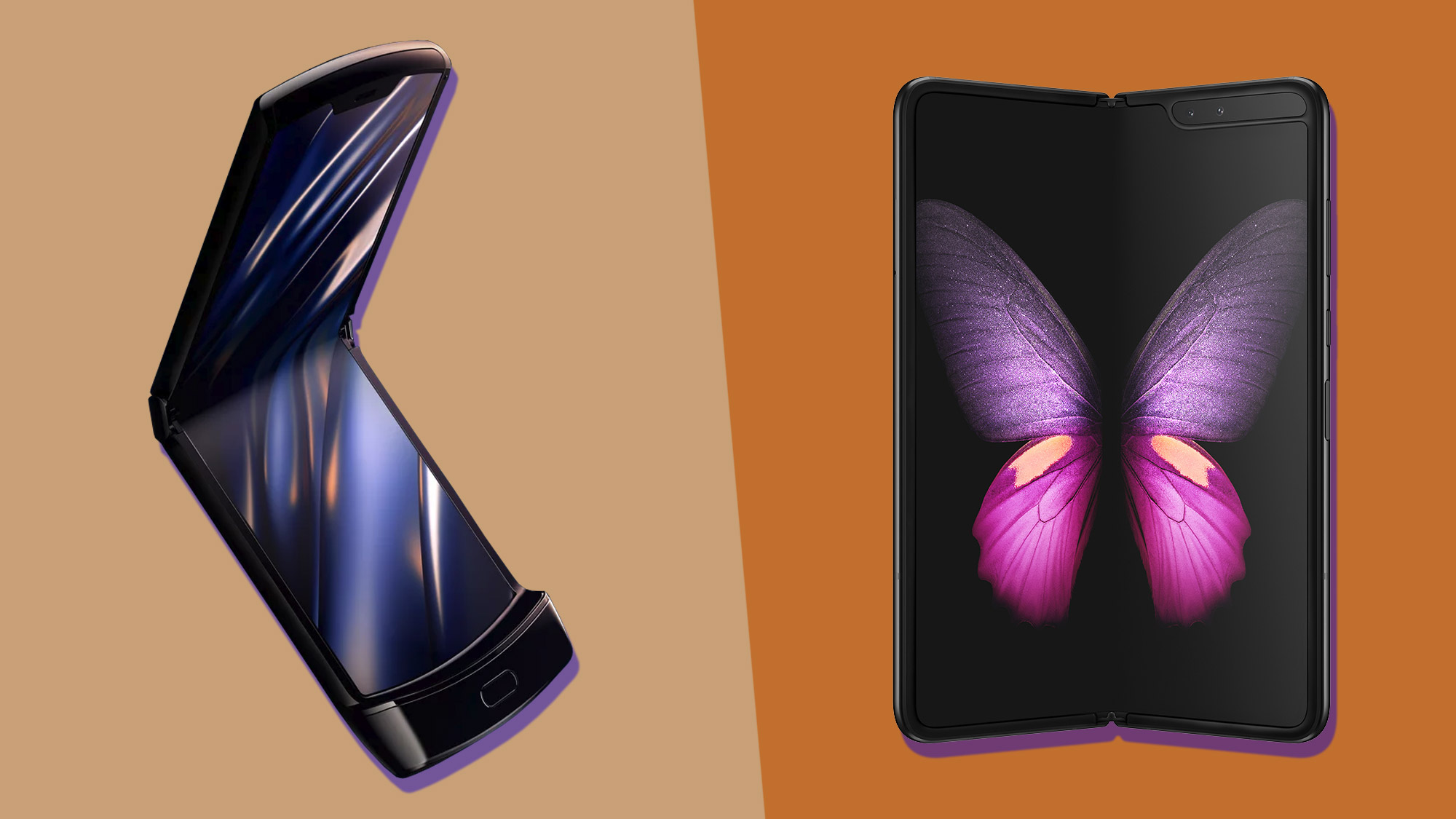
The Motorola Razr 2019 revives the most iconic flip phone design into a new form factor - a foldable phone. But instead of expanding into a tablet-like widescreen, the Razr folds clamshell-style into a form factor that’s half the size of conventional smartphones. It challenges the idea of what a foldable can be - and in so doing, the current king of foldables, the Samsung Galaxy Fold.
This isn’t so much a head-to-head competition as it is a clash of philosophies, with the Razr designed to reduce its size while the Galaxy Fold attempts to fit as much screen space into its central display as possible.
While the Samsung device is closer to the idea of ‘foldables’ as they’re popularly known - a bridge between phone and tablet - the Razr challenges the notion that devices in this newfound category must endeavor to maximize display size.
In truth, we suspect readers already know which of these devices they prefer - but this guide lays out exactly how they differ, from specs to usability. While we’ll still point out which has superior elements over the other, their unique appeals preclude a lot of direct comparisons. They have different mission goals, and we’re here to tell you if they succeed.
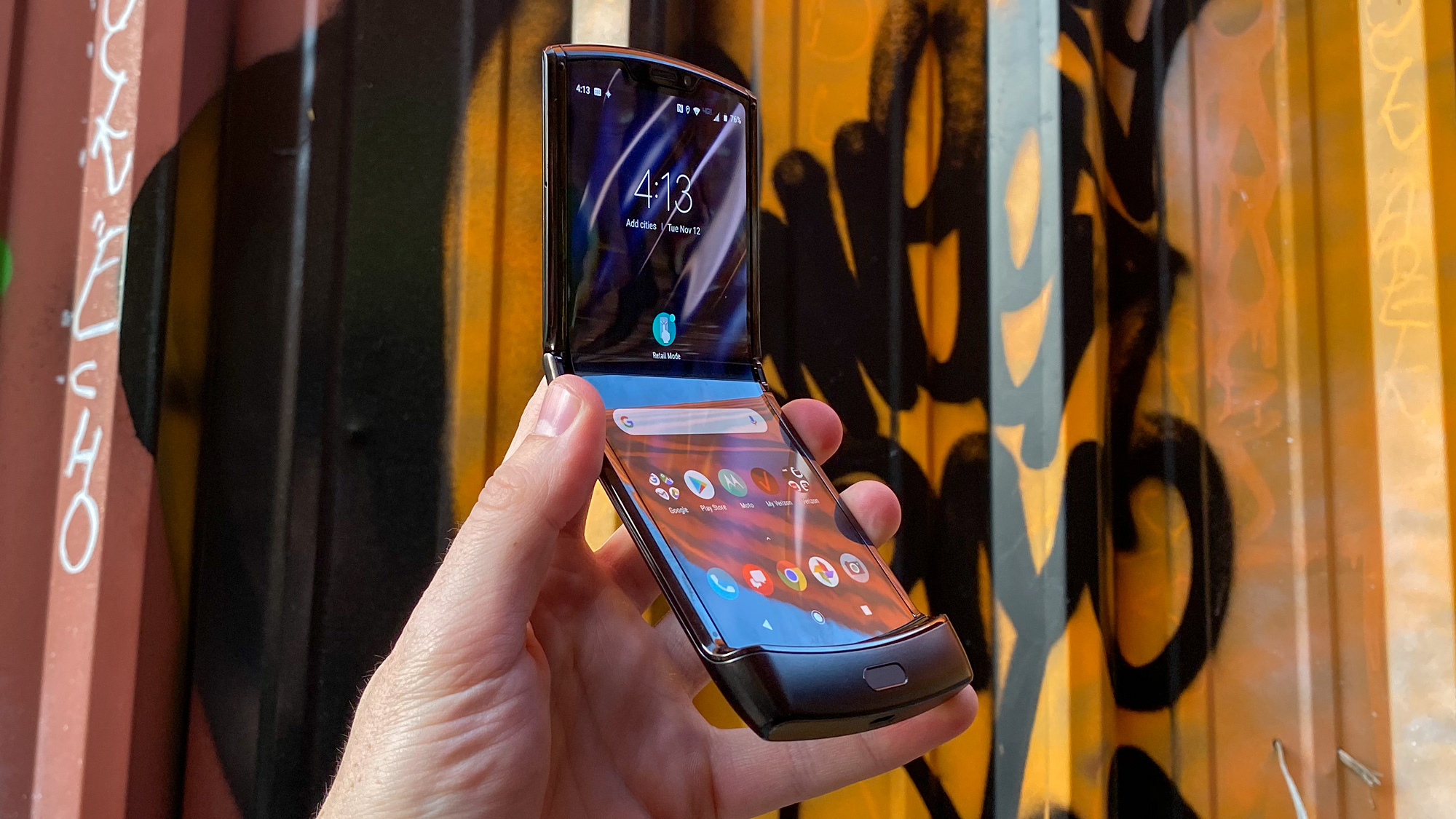
Price analysis
- The Motorola Razr will be available in the US in January 2020, other regions TBA
- Motorola Razr cost: $1,500
- Samsung Galaxy Fold is available now in the US, UK, and South Korea
- Samsung Galaxy Fold cost: $1,980 / £1,800 / AU$2,900
These are, without a doubt, premium devices, costing either half again or even twice as much as the priciest flagship smartphones on the market. You’re paying for style and innovation in this first generation of foldable devices.
The Motorola Razr 2019 has just been officially unveiled to the world, and while it’s coming out soon in the US - preorders start December 26, 2019, with a January 2020 release - it’s unclear when the device will come to other regions (though it’s planned for Asia, Australia, and Latin America). We only know the US price: $1,500. It will be a Verizon exclusive.
After a much-publicized aborted launch in April 2019 due to durability issues, the Samsung Galaxy Fold has been available to buy in the US, UK, and South Korea since September and Australia since October. It’s marginally pricier, at $1,980 / £1,800 / AU$2,900, with exclusive carrier partners AT&T in the US and EE in the UK. (Note that the US only has the 4G LTE version, while the 5G version is the only one available in the UK.)
Get daily insight, inspiration and deals in your inbox
Sign up for breaking news, reviews, opinion, top tech deals, and more.
Given the issues with the Fold, Samsung looped in 24/7 support service (by phone, video chat, or in-person visit to one of its stores) with purchase of the phone for its entire lifetime.
Similarly, picking up a Motorola Razr in the US grants access to 24/7 chat or 14-hour-per-day direct device service, as well as guarantees to replace defective parts or unduly damaged screens (Motorola hasn’t announced what kind of service and/or warranty package will be offered in other regions). Replacing the display for reasons not covered under warranty will set you back $299 (around £231, AU$439).
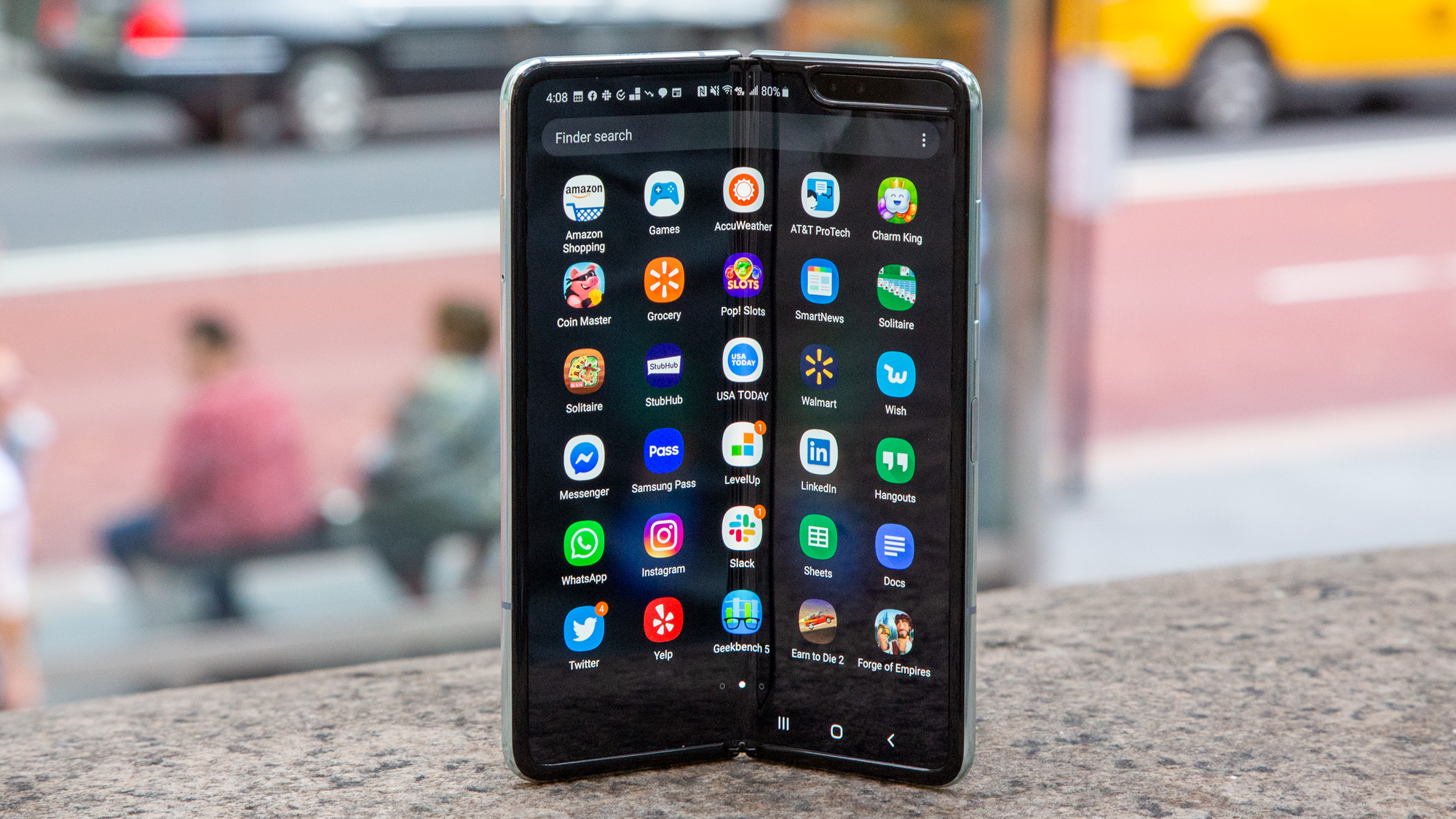
Design
As we mentioned before, both foldables define their appeal through their design. The Motorola Razr is portable and slim, while the Samsung Galaxy Fold is dense and expands into more screen real estate for productivity and media.
Considering prior foldables (the Fold, the Huawei Mate X, and even the Royole FlexPai) saw bendable displays as a way to get more screen volume in the same space, it’s amazing that Motorola went the opposite direction - and pulled it off. Unfolded, its 6.2-inch display is nearly identical in size and ratio to that of the Xperia 5 (h/t for that observation to @tnkgirl); folded closed, it takes up half the footprint of an iPhone 11 Pro Max.
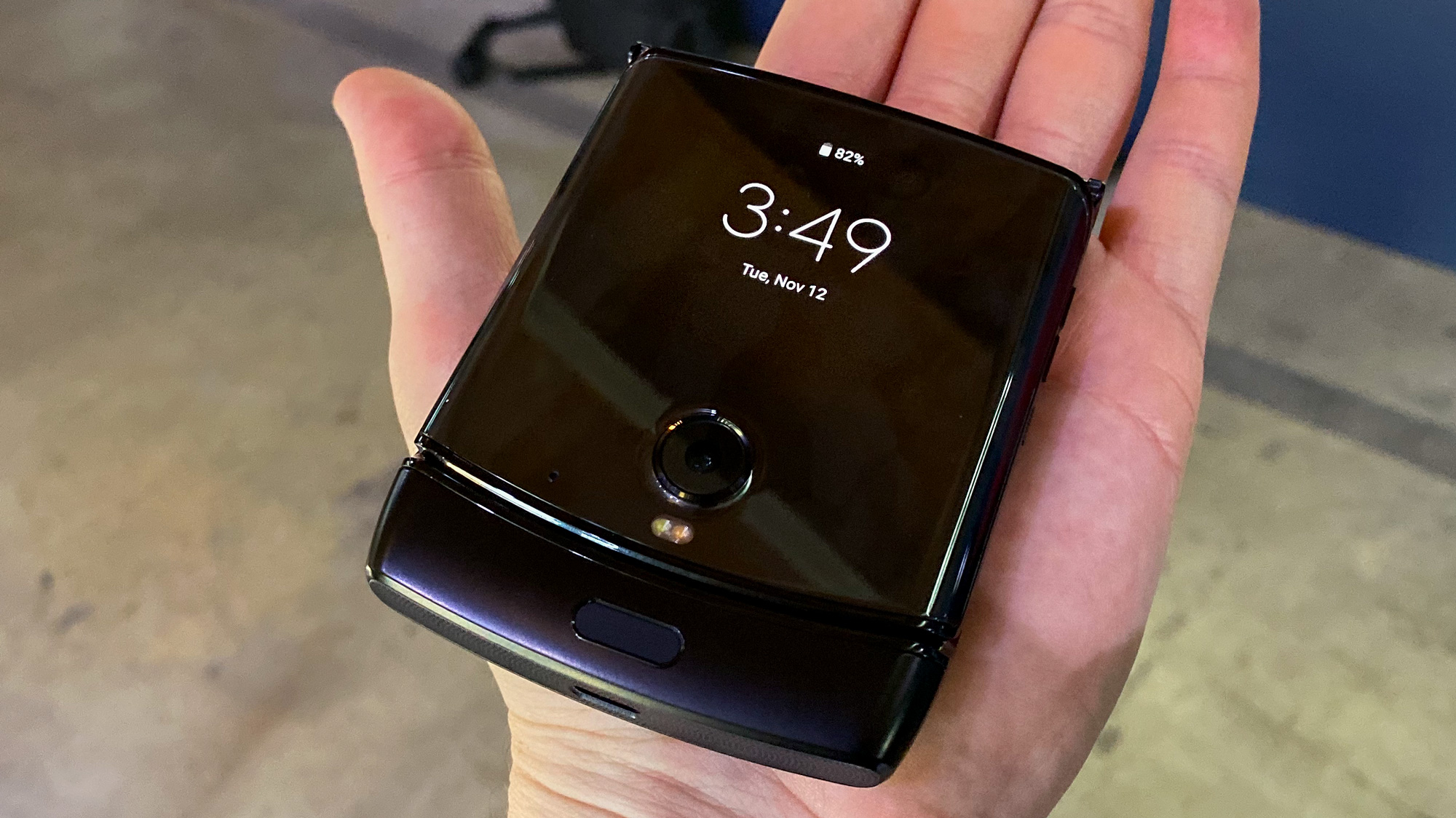
The phone is somewhat thicker, of course, with both halves stacked - 14mm - but even that isn’t too big, and it’s thinner than the Galaxy Fold’s 15.5mm. The Razr looks like its namesake, featuring the same scalloped top edge that tucks into the big bottom chin. Folding it closed shows the 2.7-inch front screen and the 16MP camera below it - and yes, you can use that screen to take selfies instead of the small 5MP camera atop the interior display. More on that mini screen later.
The Razr’s hinge is smooth but flipping the phone open isn’t quite as easy as it was with the original. Fair enough - phones have gotten much denser - so it takes a little work to pry open one-handed. it’s still satisfying to snap the phone closed to end a call, and you’ll notice how little of your pocket or bag it takes up.
There are a few disappointments in the Razr’s design, including sharp and tough to press side buttons (lock and volume rocker). There is no slot for a SIM or expandable storage - and while neither does the Samsung Galaxy Fold, the latter’s larger internal storage eases that pain point. Nor do either have a 3.5mm phone jack.
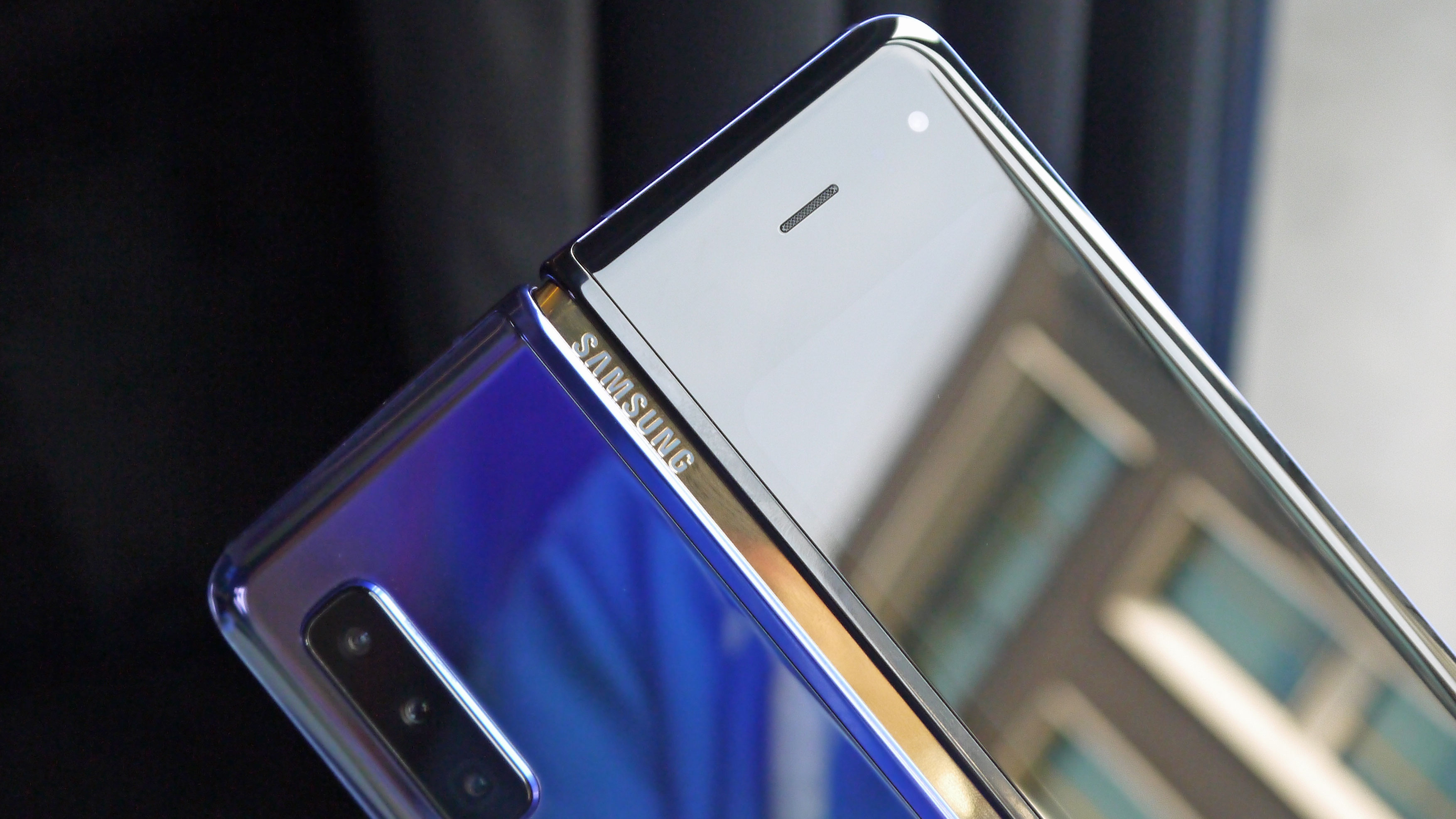
The Galaxy Fold takes the opposite approach: start with a standard smartphone footprint and unfold for more display. After the initial failures, the device was re-released in September 2019 with refinements to the screen and hinge for durability, and it is indeed pleasant to unfold the phone with a satisfying snap into place - but good luck trying to do it one-handed.
The Fold is narrower than most flagship phones when folded closed, and unfolded flat to its 7.3-inch maximum, its display sits between the massive Samsung Galaxy S10 5G (6.7 inches) and the iPad Mini (7.9 inches). The interior display is topped by a pair of cameras for video chatting, which complement the small lens on the front and the three standard (main, ultrawide, telephoto) on the back, which is the kind of overkill that allows you to take photos from any orientation.
The Galaxy Fold is also heavy at 268g, and feels like a lead candybar when folded up. While the clamshell-closed Razr is similarly hefty, its 208g weight is notably less.

Display
The Samsung Galaxy Fold’s massive AMOLED display is a sight to behold, though it has a visible crease down the center. Don’t expect it to be quite as sharp as conventional smartphone displays: the 1536 x 2152 resolution is closer to tablet pixel density than that found on flagships. But you pay for the real estate, and it’s impressive to use with Google Maps or other apps specced for its format (not all media can make great use of its 4:3-ish ratio).
There is a 4.6-inch 720 x 1680 screen on the front, which serves just fine for previewing and navigating around the phone’s Android OS as normal, but its thick bezels and dimness make it a bit lackluster. Not a big deal given most important tasks will be done on the big center screen.
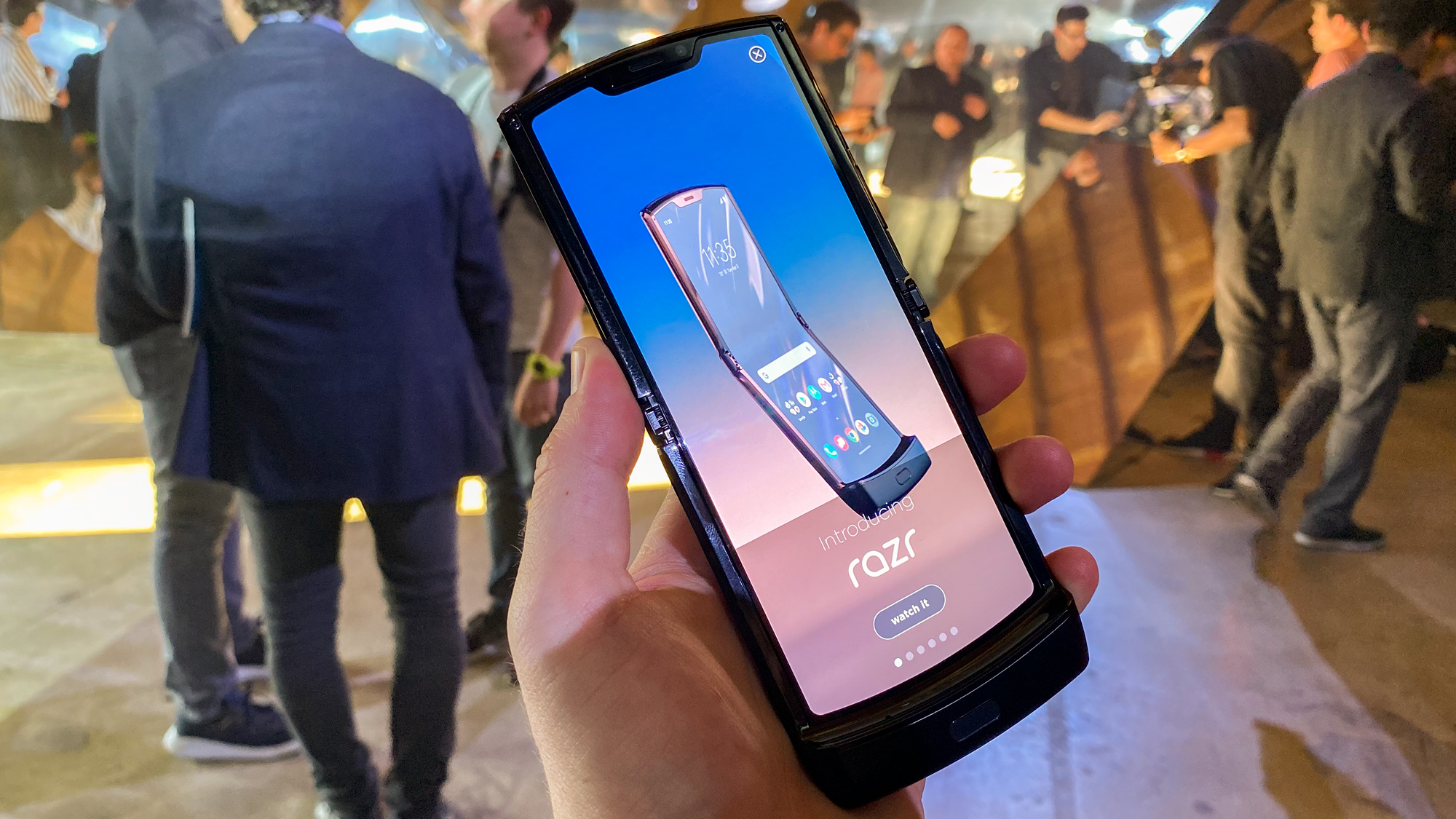
The Motorola Razr’s central 6.2-inch P-OLED display is likewise lower-resolution than conventional phones, but its central axis doesn’t show a crease - at least not right off the assembly line. This is partially due to some design wizardry that bends the screen out while the phone closes before tucking the display back in to the hinge part. Yes, this creates a small (several millimeter) gap where water or dust particles could enter, but Motorola seems unconcerned with this vector.
The front 2.7-inch display serves as a remarkable selfie-aiding screen that shows surprising clarity for its 800 x 600 resolution and small size. But you’ll mostly use it to preview texts, emails, and other messages that you can reply to with a few auto-generated suggestions - a lot like a smartwatch.
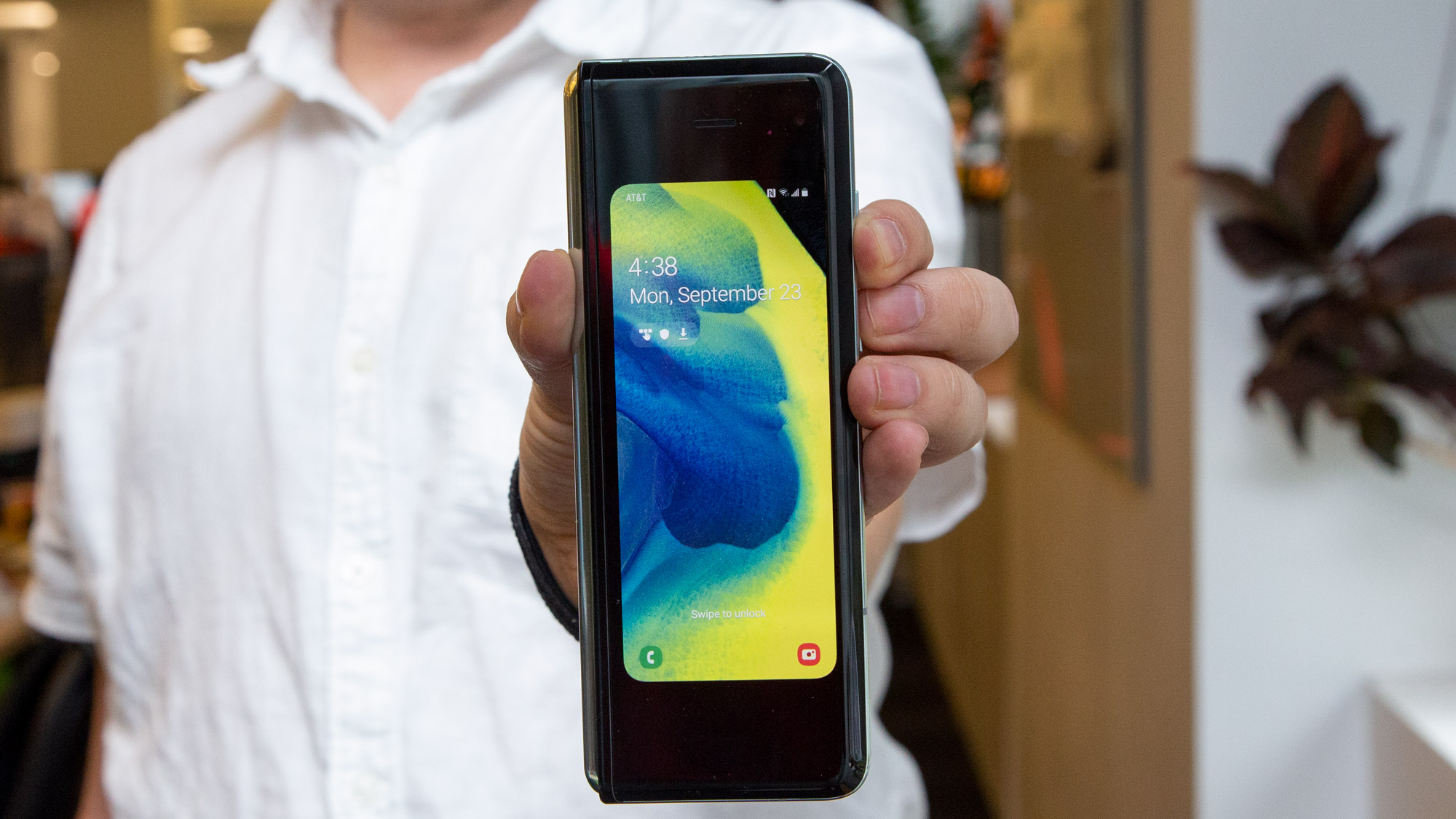
On the other hand, the Galaxy Fold’s 4.6-inch front screen is a fully functional smartphone display for unabridged access to the Android OS - though it’s a bit small and dim for extensive use.
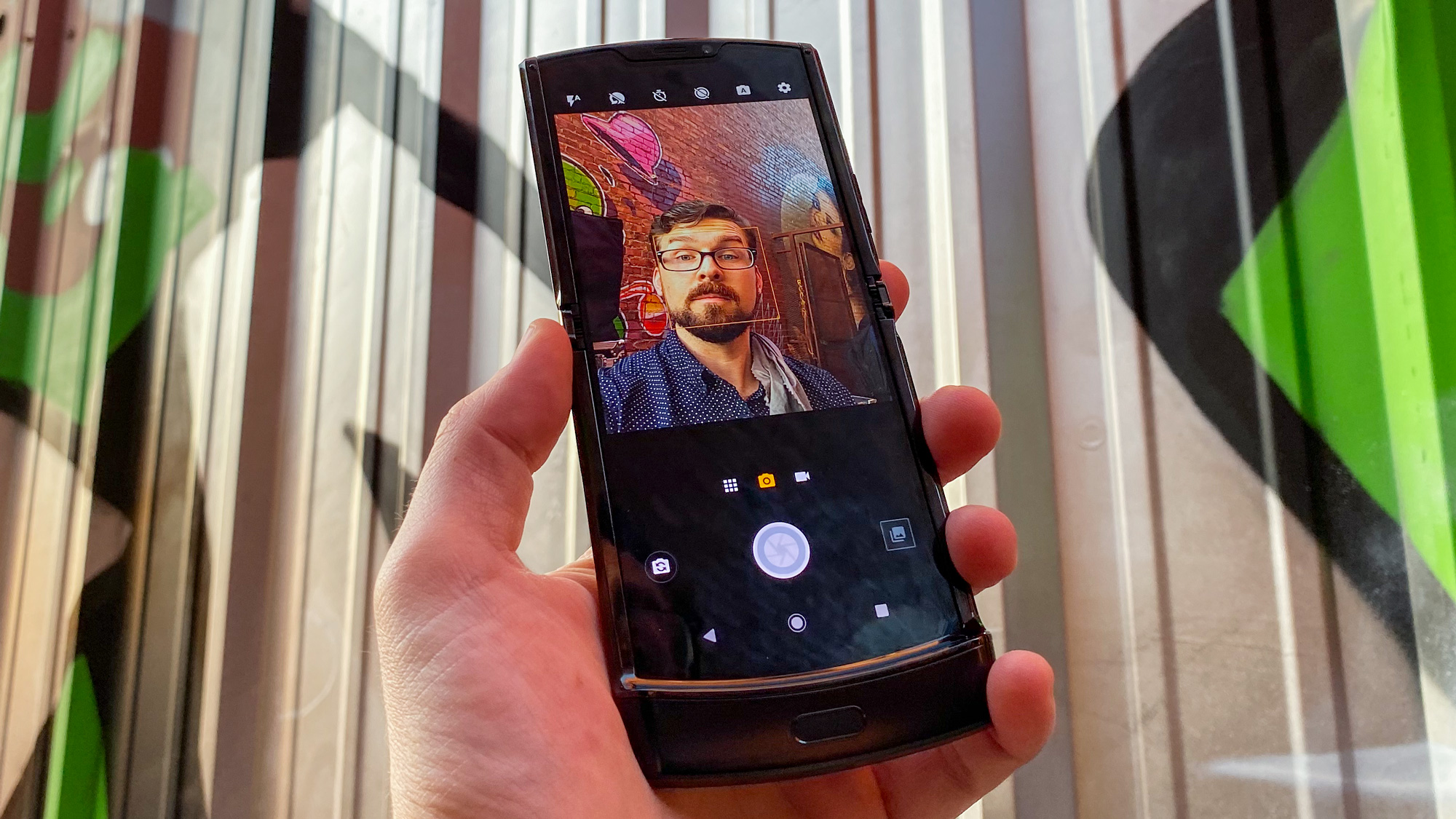
Camera
The Motorola Razr’s 16MP main camera is what you’ll be using most, and though the phone is fresh, what little testing we’ve done reveals a very by-the-numbers Motorola camera setup, with decent performance aided by improved photo software since the Moto Z4 hit the stands. The camera app is simple, with photo, video, and a branching menu with various modes (including a night mode).
As previously mentioned, the main camera can also be used for selfies in conjunction with the small front display when the phone is folded closed. This isn’t just for photos - you can video chat in this mode too.
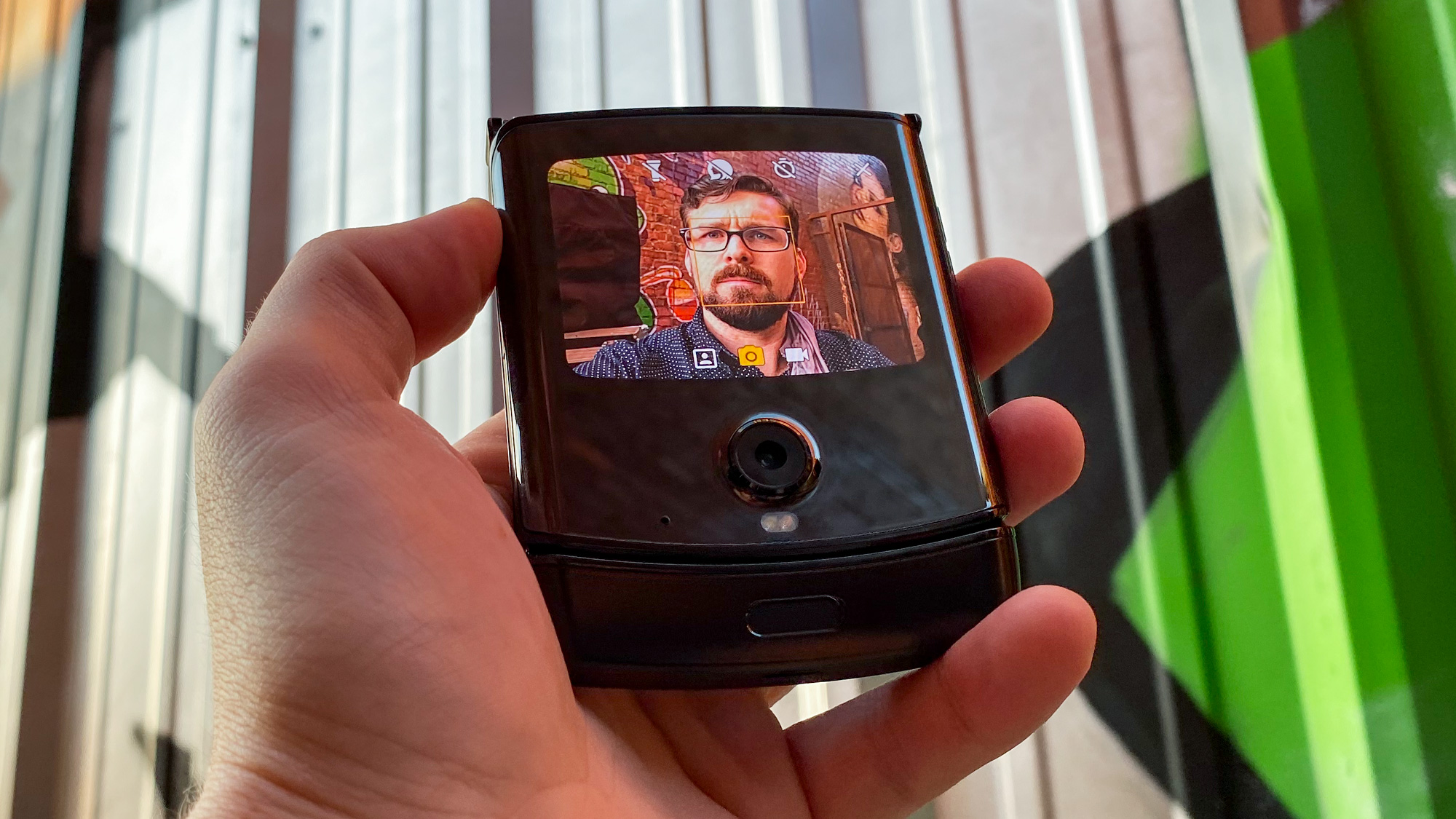
But say you’re video chatting on the front screen and want more screen - just flip the phone open and the video call will transition seamlessly to the open central screen...and the 5MP camera above it. (It can also be used for selfie photos.)
The Galaxy Fold’s camera array is a six-camera amalgam of shooters lifted from previously-released Samsung flagships. The outward-facing 10MP selfie camera is taken from the Samsung Galaxy Note 10’s front-facing camera - which is just okay, though we mostly used it for unlocking the phone.
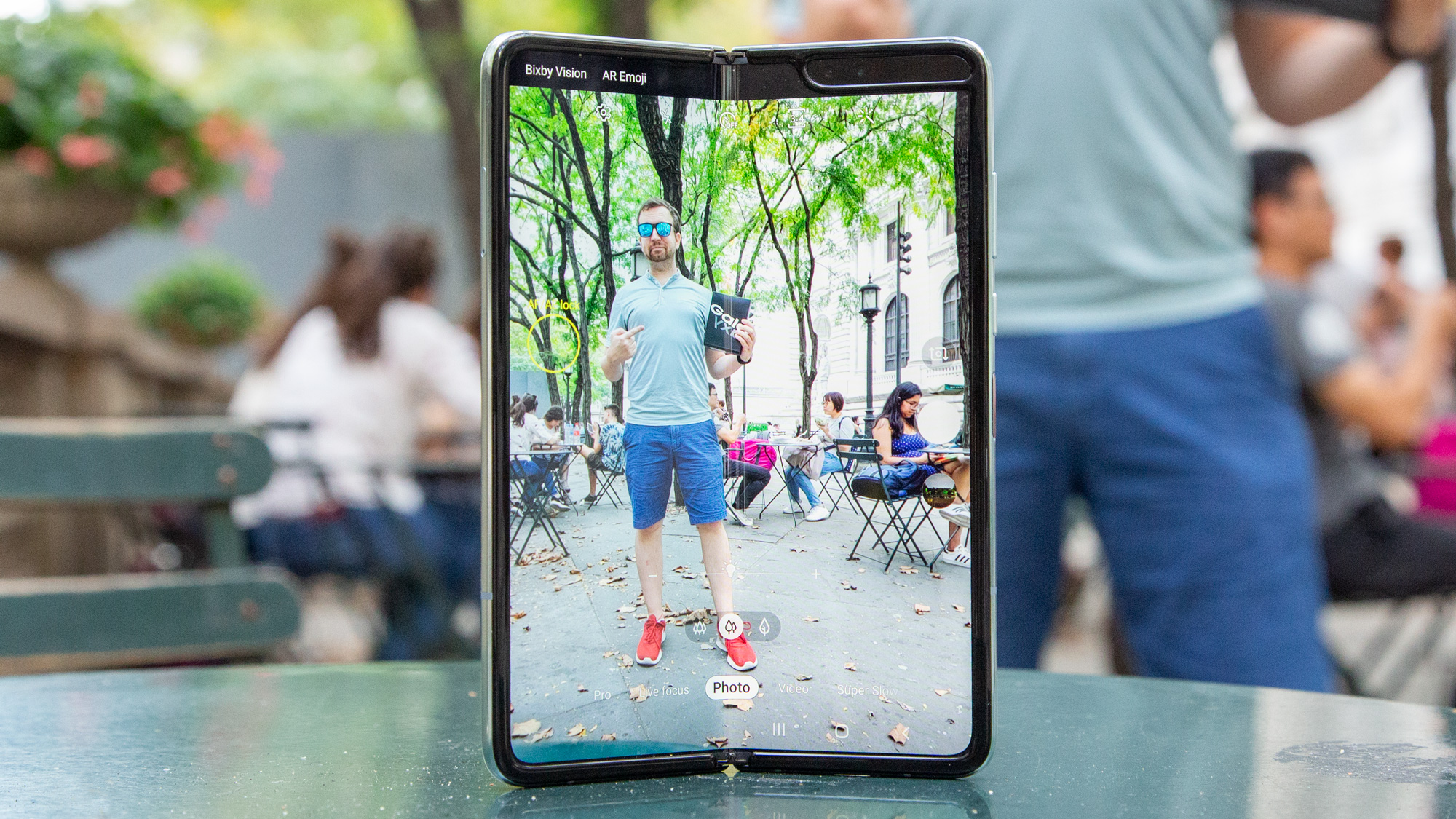
Unfolding the Fold reveals two front-facing cameras (a 10MP selfie camera and 8MP RGB camera), both taken from the Samsung Galaxy S10 Plus - unlike the outer camera, this one can take Live Focus (Samsung’s Portrait mode) photos.This duo is mostly for video chatting and elaborate selfies.
The Galaxy Fold’s rear setup is also drawn from the S10 Plus: a trio of lenses featuring a 12MP standard (variable aperture f/1.5 + f/2.4 77 degree FoV), a 12MP telephoto, and an ultrawide (123-degree FoV). These are impressive cameras, though they aren’t quite as advanced as the Note 10’s improved lenses.
Performance
The Samsung Galaxy Fold is far and away the powerhouse here, with a Snapdragon 855 chipset, 12GB of RAM, and 512GB of storage. The device is fast, even when we pop open its inner display and run several apps at once.
Which isn’t to say the Motorola Razr is slow - it runs a Snapdragon 710, a chipset designed for mid-range phones, with 6GB of RAM and 128GB of storage. The thin design necessitated a processor that wouldn’t run so fast it heated up the phone - and what’s more, would drain the battery. As you’ll see below, the Razr has far less battery to throw around.
In our initial testing, the phone ran just fine, playing media and sorting through typical tasks without a hitch. It’s hard to guess what, if anything, will trip it up.
Both phones come with Android 9 Pie out of the box - the Galaxy Fold was slated to be released long before Android 10 was released, while the Motorola Razr was likewise originally scheduled for a summer release before being delayed until later in 2019.
Both phones also lack a storage slot, so they can’t have their storage expanded. This is far less a problem for the Galaxy Fold’s 512GB internal space, but it’s a harsher penalty for the 128GB in the Razr. Still, that should be plenty for most users.
Battery
One of the creeping worries about foldables seems to be whether the extra screen real estate will require more battery. If that ends up being a serious correlation, the Samsung Galaxy Fold has prepared for it with a 4,380mAh total capacity split between both phone “halves.” We were able to get day-and-a-half battery life, but this varied wildly depending on screen use.
Likewise, the Razr has split its battery between both sections - but its capacity is a measly 2,500mAh. This seems concerning, to say the least. Today’s smartphones often start at 3,000mAh and go up from there. Motorola is confident users will get a full day out of the battery life, partially because their usage will change with some functionality outsourced to the front screen. We’ll look forward to testing this out.
In any case, both devices come with 15W fast chargers in the box. The Fold comes out a bit ahead in this regard, with wireless charging and the capability to lend its capacity out to other devices with reverse wireless charging, a feature that debuted with the Samsung Galaxy S10 line.

Takeaway
These are truly distinct devices with different ideal users: the Galaxy Fold appeals to folks who desire more screen real estate at the expense of sleekness, while the Motorola Razr is extensively designed to re-introduce compact smartphones back into the market.
In other words: you know which device appeals better to you, and there likely isn’t too much overlap between these devices. What does matter, then, are how effective these devices are at achieving what they set out to do.
The Galaxy Fold meets its goal of bringing a tablet to a phone fight, though it’s not the most elegant device with the visible seam in its inner display and big-bezel front preview screen. That said, it will likely go down as the pricey innovator that brought foldable displays to the mainstream… or at least paved the way for better executions down the line.
The Motorola Razr accomplishes its intention to shrink smartphones down to a much more pocketable form factor. Folded up, the Razr is half the size of most flagship handsets, which means it’s great for folks with small hands or who carry their device in small pockets. You’ll have to pay for the privilege, though, since the rest of the phone packs mid-range specs at best.
David is now a mobile reporter at Cnet. Formerly Mobile Editor, US for TechRadar, he covered phones, tablets, and wearables. He still thinks the iPhone 4 is the best-looking smartphone ever made. He's most interested in technology, gaming and culture – and where they overlap and change our lives. His current beat explores how our on-the-go existence is affected by new gadgets, carrier coverage expansions, and corporate strategy shifts.
